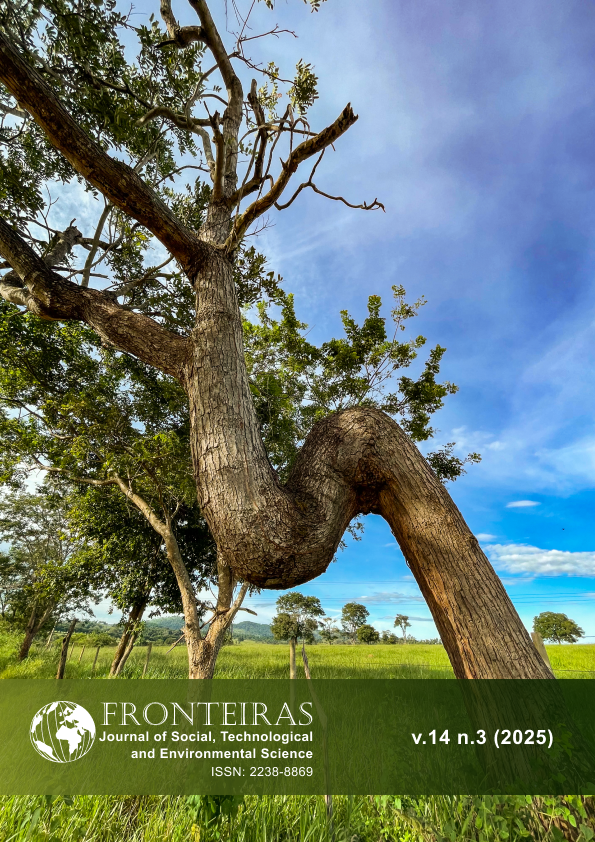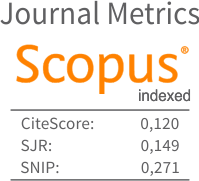Circular Economy of Medium-Density Fiberboard (MDF) and Medium-Density Particleboard (MDP): Challenges and Advances in Sustainability and Production Processes
DOI:
https://doi.org/10.21664/2238-8869.2025v14i3.7924Keywords:
medium density particleboard, medium density fiberboard, lyfe cycle, reuseAbstract
The wood-based panel industry, MDF (Medium-Density Fiberboard) and MDP (Medium-Density Particleboard), plays a fundamental role in the construction sector and mobile industry, as well as contributing to the use of waste and carbon storage. However, challenges such as the environmental stress of production, the use of synthetic, toxic resins and limitations in the reuse of these materials have generated growing interest in more sustainable measures. The present study aims to review the literature in the period 1945-2024 on the environmental, technological and sustainability aspects of these materials, seeking to identify measures to improve reuse, minimize environmental impacts and innovate with circular economy practices. A narrative review was carried out, using the Web of Science platform, of studies that evaluate the life cycle of MDF and MDP. The study highlighted aspects such as environmental impacts, technical feasibility and innovation using applied technology, using an integrative and critical approach to the results achieved. The results highlighted that the replacement of synthetic resins with biodegradable alternatives, such as Ulva algae-based adhesives, and the use of paper waste in MDF, proved to be effective strategies for reducing carbon emissions and environmental toxicity. The reuse of MDF waste through processes such as thermal hydrolysis has allowed us to recover usable fibers, despite technical challenges related to maintaining mechanical properties. The analysis showed that MDF and MDP have great development potential through the application of circular economic practices and technological innovations. Strategies such as fiber recycling, the use of biodegradable adhesives and the recovery of industrial waste are promising solutions to reduce environmental impacts and meet the demands of the sustainability plan and the 2030 agenda.
References
Ashori A, Najafi SHM, Heydari V, Besharatifar K, Taskouh HS, Maghsoodi D 2024. Utilizing de-inked paper sludge for sustainable production of medium-density fiberboard: A comprehensive study. Polymer Composites 45:6359–6373.
Chu J, Kumar A 2020. Assessment of wood industrial pollutants based on emission coefficients in China. Holzforschung 74:551–561.
Czarnecka-Komorowska D, Wachowiak D, Gizelski K, Kanciak W, Ondrušová D, Pajtášová M 2024. Sustainable composites containing post-production wood waste as a key element of the circular economy: Processing and physicochemical properties. Sustainability 16:1370.
De Souza Pinho GC, Calmon JL, Medeiros DL, Vieira D, Bravo A 2023. Wood waste management from the furniture industry: The environmental performances of recycling, energy recovery, and landfill treatments. Sustainability 15:14944. https://doi.org/10.3390/su152014944.
Farjana SH, Tokede O, Tao Z, Ashraf M 2023. Life cycle assessment of end-of-life engineered wood. Science of the Total Environment 887:164018. https://doi.org/10.1016/j.scitotenv.2023.164018.
Fehrmann J, Belleville B, Ozarska B, Gutowski WS, Wilson D 2023. Effects of particle dimension and constituent proportions on internal bond strength of ultra-low-density hemp hurd particleboard. Polymer Composites 44:7363–7383. https://doi.org/10.1002/pc.27631.
Forster EJ, Healey JR, Newman G, Styles D 2023. Circular wood use can accelerate global decarbonisation but requires cross-sectoral coordination. Nat Commun 14:6766. https://doi.org/10.1038/s41467-023-42499-6.
Garcia R, Calvez I, Koubaa A, Landry V, Cloutier A 2024. Sustainability, circularity, and innovation in wood-based panel manufacturing in the 2020s: Opportunities and challenges. Current Forestry Reports 10:420–441. https://doi.org/10.1007/s40725-024-00229-1.
Gavioli LM, Silva DAL, Bueno C, Rossignolo JA 2025. Life cycle assessment as a circular economy strategy to select eco-efficient raw materials for particleboard production. Resources, Conservation & Recycling 212:107921. https://doi.org/10.1016/j.resconrec.2024.107921.
Indústria Brasileira de Árvores. Relatório 2019. São Paulo: Ibá, 2019. Disponível em: https://iba.org/datafiles/publicacoes/relatorios/iba-relatorioanual2019.pdf. Acesso em: 20 de fev de 2025.
Organização das Nações Unidas. Objetivos de Desenvolvimento Sustentável, 2025. Disponível em: https://brasil.un.org/pt-br/sdgs. Acesso em: 20 de fev de 2025.
Rodríguez GE, Bustos Ávila C, Romero R, Cloutier A 2023. Impregnation of medium-density fiberboard residues with phase change materials for efficient thermal energy storage. Forests 14:2175.
Savov V, Antov P, Panchev C, Lubis MAR, Taghiyari HR, Lee SH, Krišt’ák L, Todorova M 2023. The impact of hydrolysis regime on the physical and mechanical characteristics of medium-density fiberboards manufactured from recycled wood fibers. Fibers 11:103.
Taskhiri MS, Jeswani H, Geldermann J, Azapagic A 2019. Optimising cascaded utilisation of wood resources considering economic and environmental aspects. Computers and Chemical Engineering 124:302–316. https://doi.org/10.1016/j.compchemeng.2019.01.004.
Zeng Q, Lu Q, Zhou Y, Chen N, Rao J, Fan M 2018. Circular development of recycled natural fibers from medium density fiberboard wastes. Journal of Cleaner Production 202:456–464. https://doi.org/10.1016/j.jclepro.2018.08.166.
Downloads
Published
How to Cite
Issue
Section
License
Copyright (c) 2025 Gabriel Garcia Gonçalves, Lucas Danilo Dias

This work is licensed under a Creative Commons Attribution-NonCommercial 4.0 International License.
This journal offers immediate free access to its content, following the principle that providing free scientific knowledge to the public, we provides greater global democratization of knowledge.
As of the publication in the journal the authors have copyright and publication rights of their articles without restrictions.
The Revista Fronteiras: Journal of Social, Technological and Environmental Science follows the legal precepts of the Creative Commons - Attribution-NonCommercial-ShareAlike 4.0 International. 


